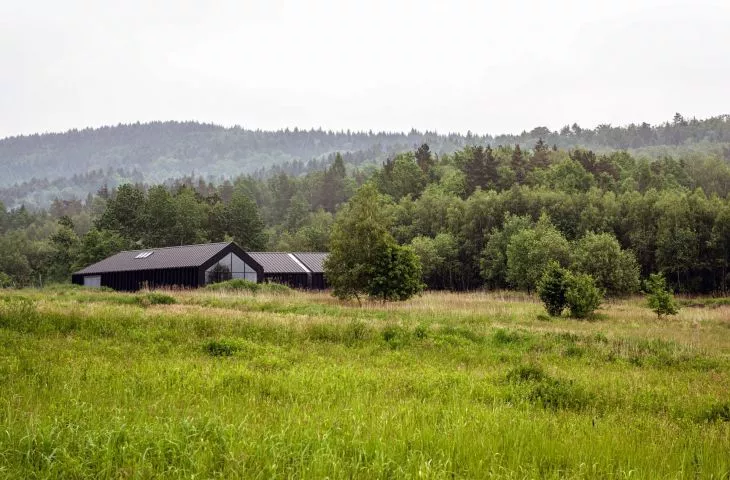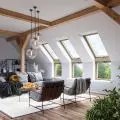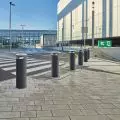In creating a house with an art studio in Stryszow, the architects of the dotka studio tried to blur the boundary between architecture and nature. The projection of the house can be read in two ways - as inscribed in the shape of the letter L or, taking into account the birch forest adjacent to the block, as a composition based on three parts, in which the forest is the third, natural wing of the house.
Themonochromatic, dark body of the building is divided into a living area connected by a corner glass link with guest rooms adjacent to the artist's studio. Thanks to an openwork zone at the end of the studio, the house opens up to the forest. The ridges of the house's wings rise gently from the lowest point in the corner of the block to create high glazing at the end of each wing, allowing views of the Beskid in the residential part and the forest in the studio part.
block diagram
© dot studio
Ola Kloc: What was the investors' priority?
Jakub Kowalczyk: The investors' priority was to create a house that would combine a residential function with an art studio. Among other things, the studio is to be used for meetings and workshops with friendly artists from around the world.
Ola: What is the reason for the L-shaped floor plan of the building?
James: A beautifully landscaped plot of land located at the intersection of local roads. On the northern side, the part to be developed is bounded by a birch forest, which became the starting point for creating a house with a composition based on three wings.
A residential wing, a wing housing the artist's studio and guest rooms at the end of which an openwork "gate to the forest" was designed, and a natural wing. Together they form a contemporary interpretation of traditional courtyard buildings.
Thanks to the openwork zone at the end of the studio, the house opens up to the forest
Photo: Maciej Lulko
Ola: What was the biggest challenge in this project?
Jakub: A considerable challenge was the construction of the building, which is based on a reinforced concrete frame - a sequence of frames. The geometry of each frame is different, following the idea of rising ridges. The realization of this required considerable precision on the part of the contractor, which is not obvious in smaller projects.

































